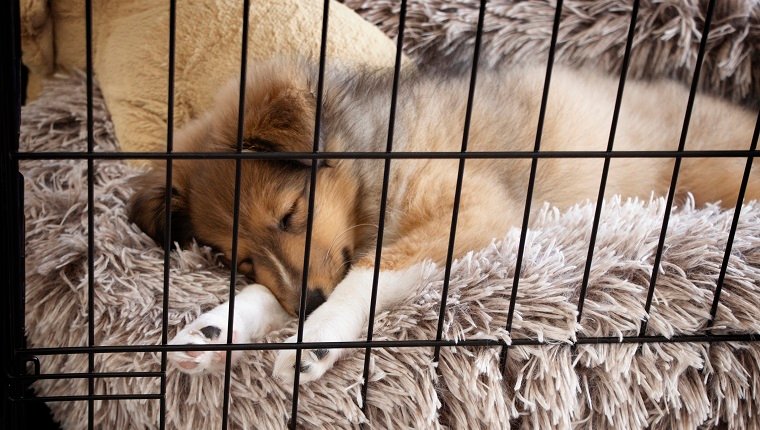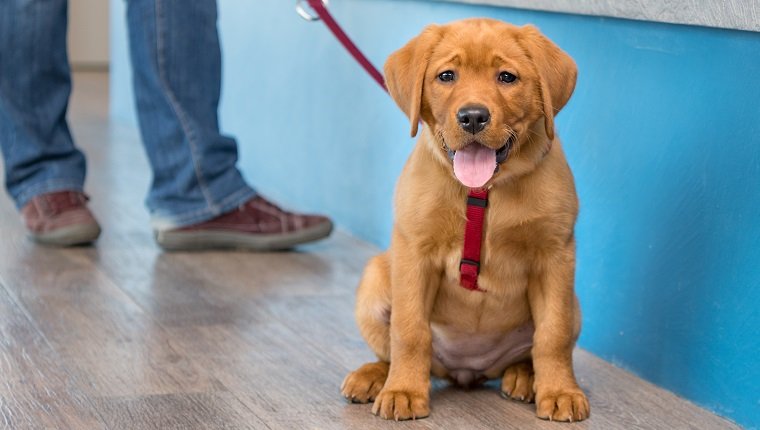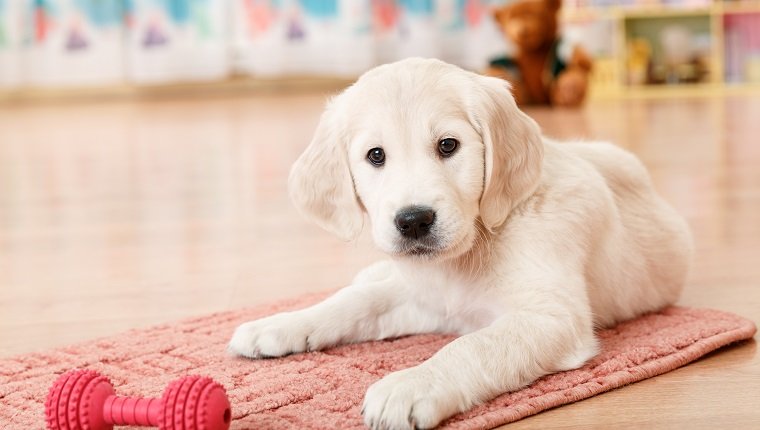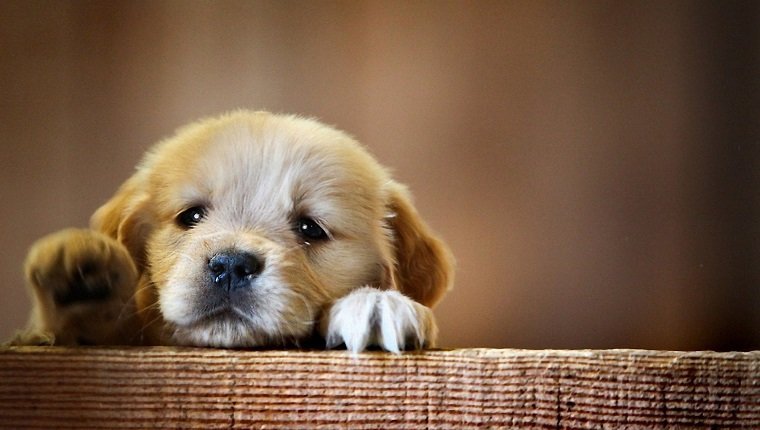I believe that sweet puppy breath is nature’s No. 9 love potion. Once exposed, you’ll be intoxicated and powerless to rearrange your life so you can spend as much time as possible with your new puppy.
Day by day, you feel your mood and spirit lightened when you see them frolicking in a curious, enthusiastic, and yet yet fully coordinated way.
These brief bursts of recreational energy are balanced by spending hours watching the calm, deep sleep unique to small animals. When you realize you have to go to work, school, or the grocery store, your hazy fog of love begins to lift.
But the thought of leaving your new puppy alone at home is enough to plunge the most rational pet parents into a sense of guilt. This is even worse once you step out the door and hear the whimpering, whimpering, howling, and barking of a puppy who suddenly realizes that he has been abandoned.
What follows is nothing more than the anxiety of separation between dogs and humans.
Solitude is “Ruff”
Puppies are programmed to seek safe and comfortable social relationships. Spending time alone is inherently foreign to them, and when they are with their mother and littermate-born children, they are unlikely to experience it during their puppy years.
However, because almost all pet dogs need to be alone. Helping puppies develop self-pacifying skills and spending time calmly and quietly without family is an important part of early puppy education.
Doing so can reduce the separation stress for you and your dog. However, be aware that helping your puppy learn this skill should be balanced with a well-planned and implemented social plan so that they also learn to enjoy the company of a wide range of people.
In most cases, dogs’ social preferences work in our favor. After all, they have been our faithful companions for many years and will work by our side to alert us to intruders, otherwise it is what people expect from animal companions.
However, this social tendency also means that we must gradually adapt to learning to spend time alone.
In addition, each dog is an individual and should be provided with everything they need to learn in as stress-free a way as possible that suits their specific temperament and experience.
Therefore, be sure to continue with the following tips at a pace that suits your pup.
Take advantage of nap time to your advantage

Make the most of your puppy’s need for adequate rest. As wonderful as your sleeping puppy cuddle is, try to use important naptimes as an opportunity to separate your dog from you, and this may be the easiest for them.
Taking a break in a properly sized crate is often the best option, as it not only provides a safe resting point, but it is also a useful home training tool if used properly.
Start by putting your pup in their crate in its proper place after being eliminated and when they seem to need a nap the most.
The crate should be near you or another family member. However, over the course of a few weeks, you should be able to gradually move it further.
When your pups wake up, be sure to take them to the potty immediately.
Toys can keep them occupied
When not playing with you, use puzzles and chewing toys to keep your puppy entertained. Dogs, especially teething puppies, love to chew. Prepare five to ten chewable toys for your pup to play with.
In the middle are hollow toys that can be given food or treats to the puppy, like KONG, to keep your dog busy as you step out the door.
Easy-to-digest chewable toys, such as Bully Sticks, are also a good option, but you may want to limit your dog’s consumption or take chews away when they wear out.
When you’re not interacting with them, giving your dog these engaging chewing options will keep them happily busy.
Practice with a leash

Use a six-foot leash to tie your dog to a nearby stable object and provide two chewing toys to keep them busy. Start with your dog at a distance of no more than a foot or two, then gradually increase the distance while keeping your puppy in your line of sight at all times.
While they can also see you, this exercise helps prevent your dog from becoming a “velcro dog” and needs to be near you and follow you when you’re home.
This is a small step that helps in a gradual transition to the point where your puppy is finally able to rest calmly when you are not at home.
Give your puppy plenty of exercise
Provide an adequate and appropriate outlet for your puppy’s physical fitness.
In addition to plenty of potty rest and walking, active play bodes well for your puppy’s overall health, including acceptance of your own rest time.
Try playing grab and training games that make your puppy move, such as barking the puppy back and forth between two or three people for a few minutes and rewarding the dog when they respond.
skill comes from practice

As a general rule, try to spend at least 30 to 50 percent of your time in your home allowing your puppy to practice self-pacifying skills.
The amount of time you spend practicing depends on your dog’s temperament and the needs of the experience of solitude. But keep repeating their training throughout their puppy years until they can comfortably relax when you’re out of their sight.
These tips will help you achieve your long-term goals, help your puppy grow into an adult dog with the necessary skills, and be free to wander around your home whether you are at home or not. However, your puppy needs your guidance and help to get to this point.
So while separating yourself from your puppy can be difficult, consider it in their best long-term interest. Failure to help your puppy learn to be alone is a source of difficult adult dog separation problems, which can be very stressful for dogs and their families.
On the other hand, laying a foundation for your puppy to spend time alone will cause an adult dog to be happy while you are there and calm and calm when you are away.

